What Taekwondo Is:
Taekwondo is a popular martial art worldwide and has even made its way to the Olympics. It’s a combination of kicking and hand techniques mainly used for self-defense. It’s considered a relatively unique martial art since it’s based on a belt ranking system. Along with that, it’s supposed to harmonize the mind and body and teach self-defense methodically, realistically, and constructively. But what actually formed Taekwondo into what it is today, and why are there two federations? Are these two federations: International Taekwon-do Federation (ITF) and World Taekwondo Federation (WTF), still necessary today?
Origin of Taekwondo:
It started when Hong-Hi Choi began Taek Kyon at 15 and later became a black belt in Karate in Japan. He would, later on, found Taekwondo (itf.org). As World War ll was nearing the end, in 1944, one Korean was given permission by the Japanese government (which was occupying Korea at the time) to open the first Korean-run martial arts school since Korea became occupied in 1905. This Korean was Won-Kuk Lee, who had experience in various martial arts and combined these into Tangsudo (way of the T’ang hand). He ended up naming his own school Chung Do Kwan which translates to school of the Blue Wave. In 1946 he began developing new techniques systematically. Near the end of 1954, he’d almost finished a new martial art foundation for Korea. April 11, 1955, this martial art was given the name Taekwon-do (Understanding Kukkiwon, WTF, and ITF).
Hong-Hi Choi also studied at the Chung Do Kwan and eventually became a Major General in the Korean military (Understanding Kukkiwon, WTF, and ITF). The concept of form training was born from Japanese Karate because it’d never been used in the Korean martial arts system. But these Korean Kwans wanted to focus on kicking as the primary weapon, and Karate didn’t complement this. This led Choi to modify them, adding kicks and forms and naming each. He did this naming using the history of Korea that had previously been suppressed. He called the forms practice Teul (also written as Tul). Plenty of Kwans opened between 1950-1955, but there was an interruption during the Korean war (1950-1953). With all of these schools opening, there was a push for them to all unite under one name, but no one could decide on a name which led to a meeting held on April 11, 1955, to vote. General Choi and another Chung Do Kwan student had done terminology research. They came up with Tae Kwon (foot, hand) since it expressed a lot of foot techniques and had similarities to the ancient Korean Tae Kkyeon. Taekwondo ended up being officially selected, though there’d be a debate over it for over a decade (Understanding Kukkiwon, WTF, and ITF).
The Korea Taekwondo Association (KTA) was formed in 1961 in Seoul, South Korea. Many of the larger Kwans would end up uniting under this title. The first president that was elected by the KTA was General Choi, but he ended up being sent as an ambassador to Malaysia, so he couldn’t be president. While he was gone, the name was still being debated. It ended up being changed to Taesudo under the second president (Understanding Kukkiwon, WTF, and ITF).
When/Why ITF and WTF Taekwondo split:
When Choi returned from his ambassadorship, he became the third president and changed the name back to Taekwondo. He taught Chang Hon curriculum in the military as his own system and named it Oh Do Kwan (School of My Way). But he had a very authoritarian approach and wanted to enforce this Chang Hon system into the KTA, which they didn’t like. The Kwan leaders suggested that he step down as the KTA president. On March 22, 1966, Choi did resign and created the International Taekwondo Federation (ITF) in Seoul, South Korea (Understanding Kukkiwon, WTF, and ITF)
Even with his creation of ITF, the KTA was still the official governing body and was asserting control over how ITF was run, which Choi did not like. After much tension and political unrest in the government, General Choi moved to Canada, where he established the new ITF headquarters. The ITF continued to teach Choi’s Chang Hon system. This became his International Kwan, independent of Korea and the KTA authority. The Korean government continued promoting Taekwondo as the Korean National Martial Art in hopes it’d be put into the Olympics. This would boost both Korea’s economy and its world image. With this in mind, Korea began developing the Kukkiwon (National Academy) under Dr. Un-Young Kim. The Kukkiwon was competed in November 1972 and named in February 1973. Dr. Kim was Vice-President of the International Olympic Committee (IOC). An International Governing body would be needed for the sport to be considered in the Summer Games. On May 28, 193 World Taekwondo Federation (WTF) was established by the Kukkiwon. General Choi had stated that he wanted Taekwondo in the Olympics. He moved to Canada partially because the 1976 games were being held in Montreal. The IOC ended up allowing WTF to be the International Federation that would govern Taekwondo. After this, General Choi ended up criticizing Taekwondo’s involvement in the Olympics. (Understanding Kukkiwon, WTF, and ITF).
Essence of Taekwondo:
5 tenants of Taekwondo were created by General Choi, which he based on both physical trainings as well as training the mind and spirit (Chesterman n.p.).
The 5 tenants: courtesy (ye ui), integrity (yom chi), perseverance (in nee), self-control (guk gi), and indomitable spirit (baekjul boolgool) (Chesterman n.p.).
Elements of Taekwondo:
Taekwondo is more than just sparring; every part of it was developed for a reason by General Choi. All stances require you to have good posture, which means; a straight back and relaxed shoulders, but a tensed torso, your chin up, balanced perfectly, and good weight distribution (Chesterman n.p.).
Patterns are an essential part of Taekwondo. There are 24 representing historical figures. Having good timing and accuracy is crucial because you need to end in the same place you start. You also need good breathing techniques because you should breathe out on each move and will be graded on this (Chesterman n.p.).
Breaking/Destruction, or Gyokpa in Korean, is a unique part of Taekwondo. You can use any hand or foot techniques besides blocks to break boards. Taekwondo boards are specifically for breaking and can vary from school to school (Chesterman n.p.).
The uniform of Dobok in Korean is a thin, white, open jacket and loose pants (Chesterman n.p.).
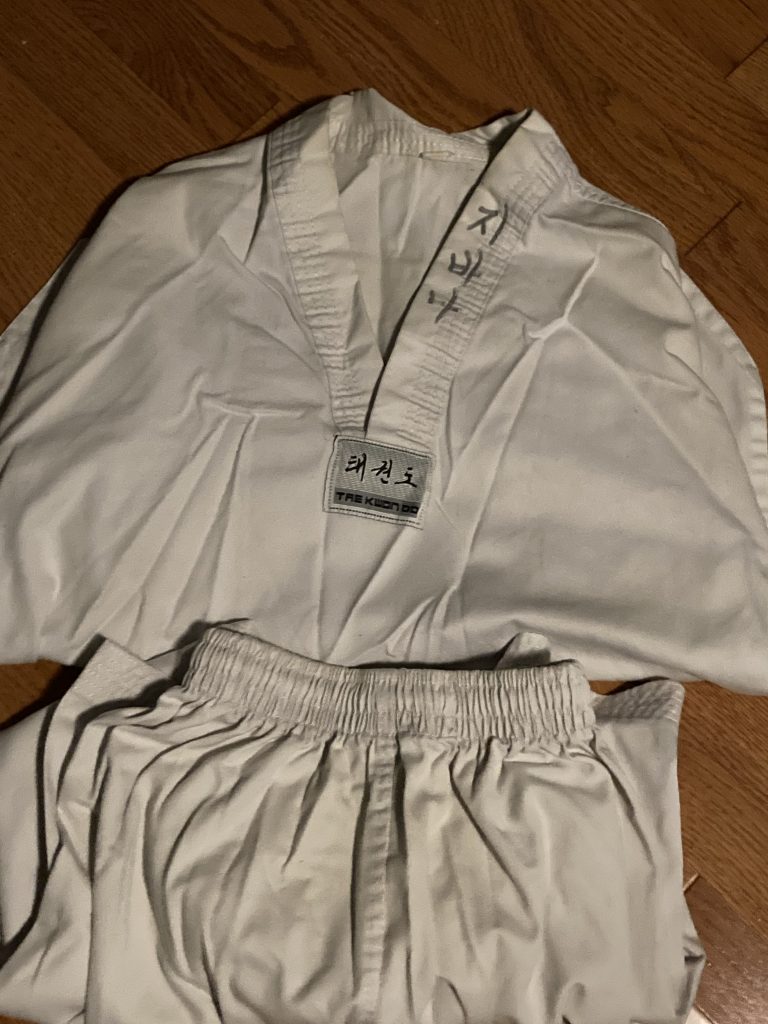

Unlike other martial arts, Taekwondo is based on belts. Every belt color has a meaning and tells others of your rank (Chesterman n.p.).
| Belt Colors: | Meaning of the Colors: |
| White | innocence of the beginner |
| Yellow | earth in which a plant sprouts and roots |
| Green | growth |
| Blue | heaven or sky, which a plant grows towards |
| Red | sun, energy, determination |
| Black | maturity |
There are 10 grades or kups before you reach a black belt, but there are only 5 colors. A tag is worn on those higher within the kup to signify they’re halfway. Kups go from 10 to 1, with 1 being the highest. There are 9 levels of black belt going from 1 to 9, also known as dans in Korean Chesterman n.p.).
ITF and WTF Taekwondo are incredibly similar, but the most significant difference is how they teach sparring. WTF allows full-body contact, while ITF only allows semi-contact. Full contact has both head and body gear because both places get hit. Punches are only allowed to the body and only count if you move your partner back, which is typically hard. You can kick both the head and body. This is the style taekwondo is fought in at the Olympics. One point is awarded for each successful hit. Semi-contact has foot, hand, shin, and head guards. You’re allowed to punch the head in this form because full force isn’t used, and techniques aren’t followed through. Unlike in full contact, this contact doesn’t allow you to use full power with your hits and has you withdraw right as you make contact. A punch = 1 point, a kick to the body = 2 points, a kick to the head = 3 points, and any jumping kick to both head and body = 4 points. Both types declare the winner as whoever has the most points. Full contact also allows you to win if you knock your partner out. Weight is used to put you into a category so that the fights are fair. Lighter people tend to be quicker and being heavier isn’t really an advantage. Penalties are given if you break the rules (Chesterman n.p.).
Taekwondo Training:
A big part of Taekwondo training is stretching. You need to stretch a lot to have the ability to get high kicks and to have good speed and control. Partner stretches are beneficial to gain flexibility. Along with stretching, warming up is also essential. A typical Taekwondo warmup consists of jogging, pushups, and sit-ups Chesterman n.p.).
Some different Taekwondo techniques:

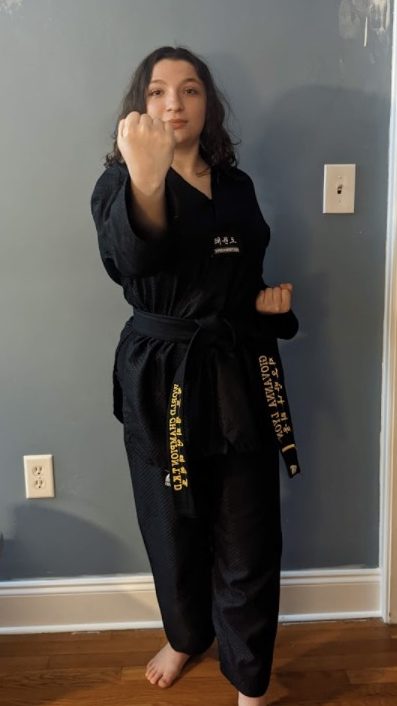
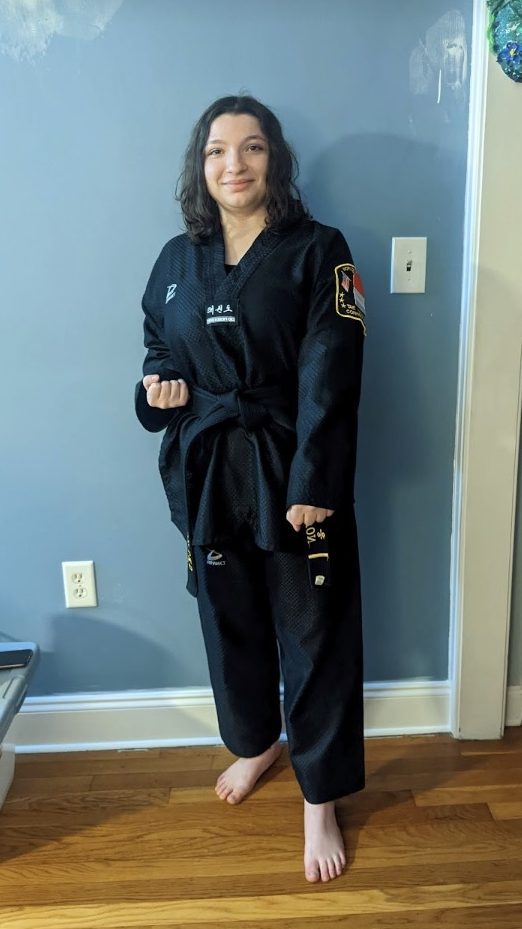
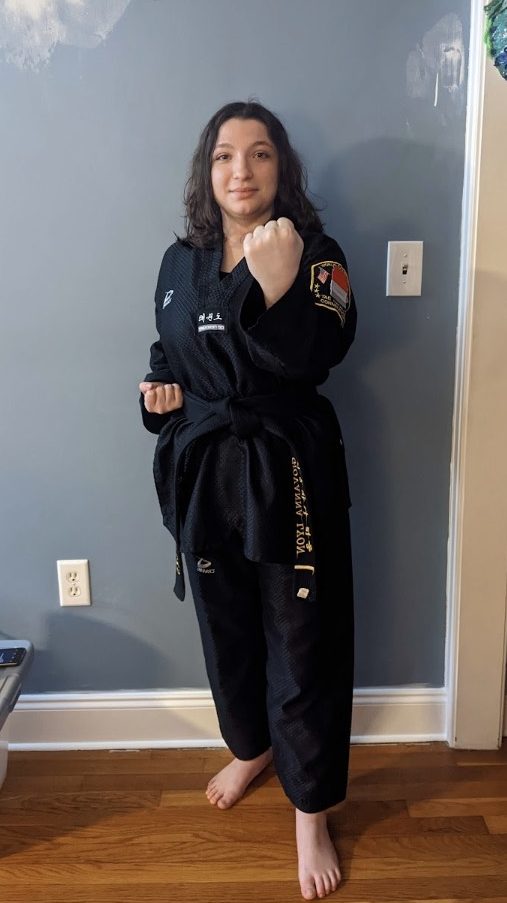
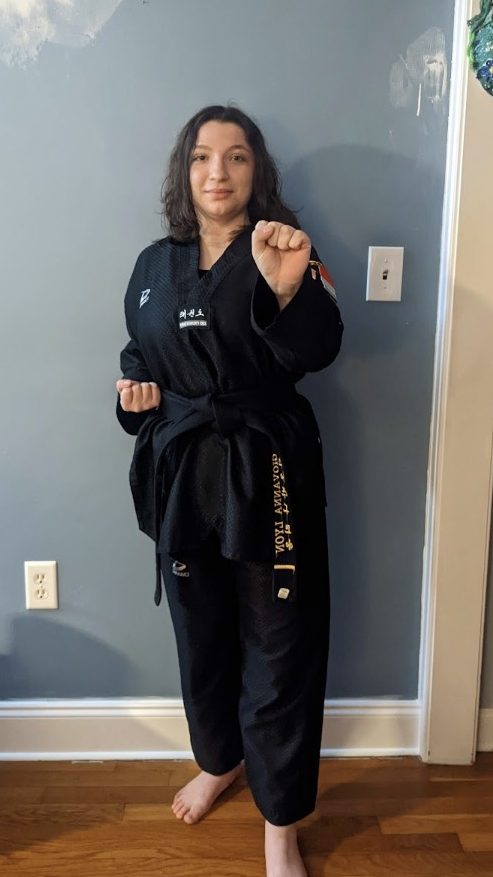
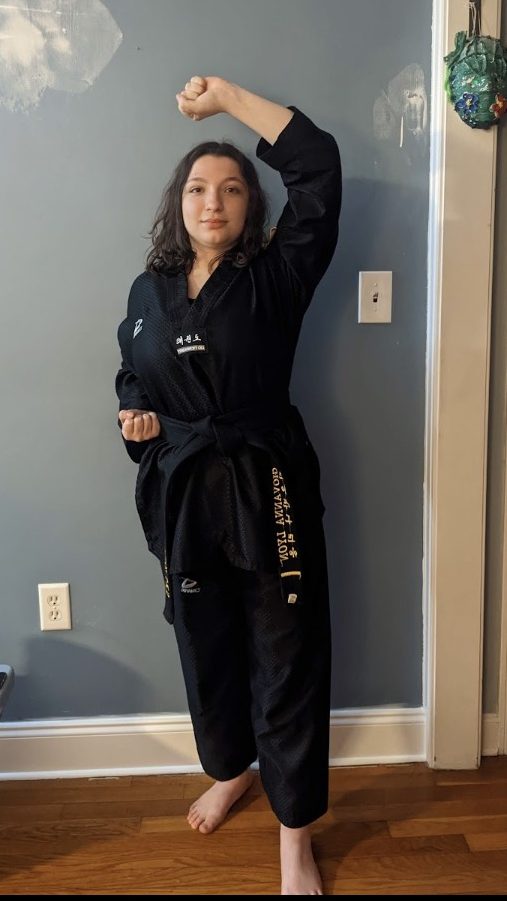
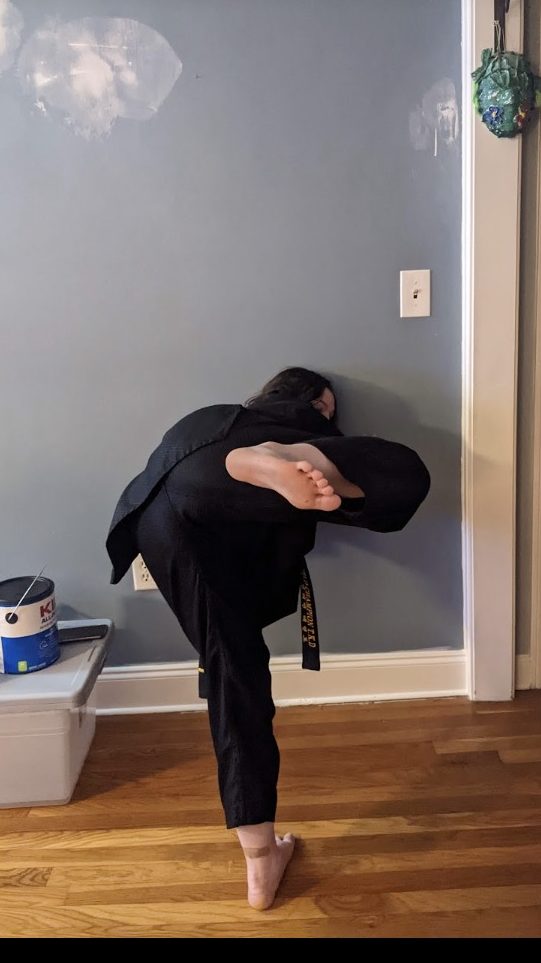
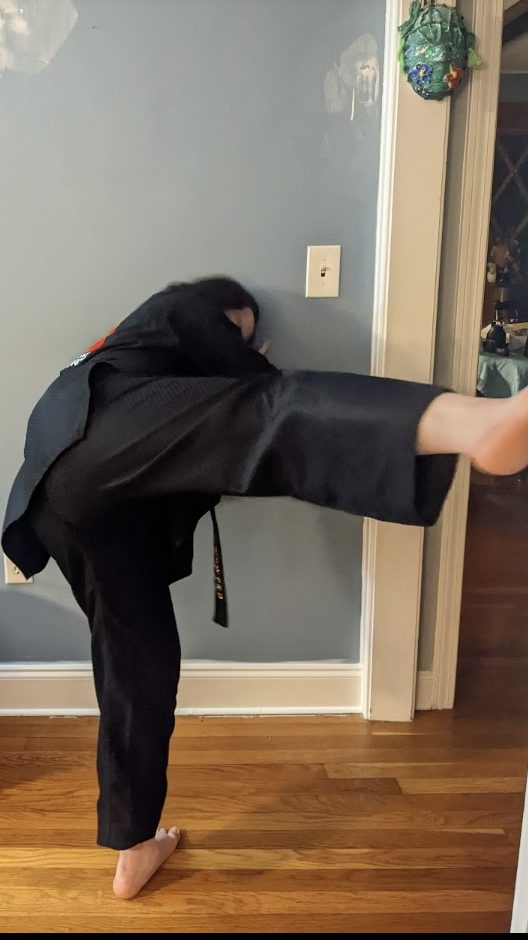
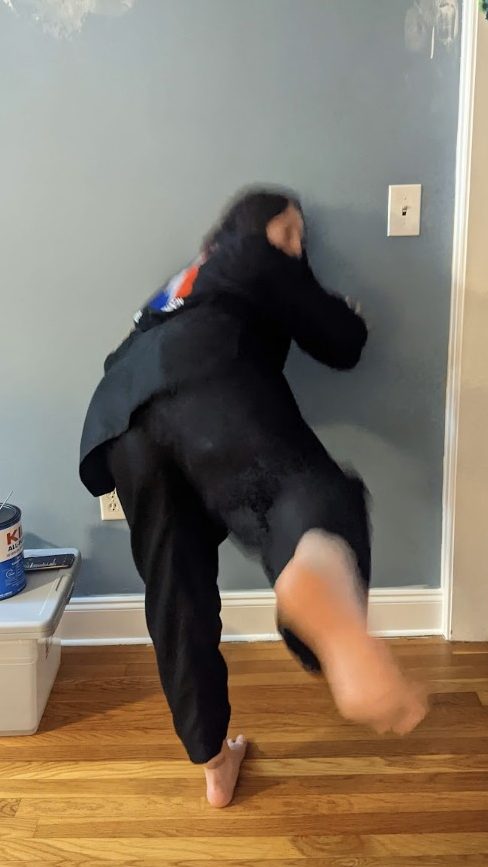
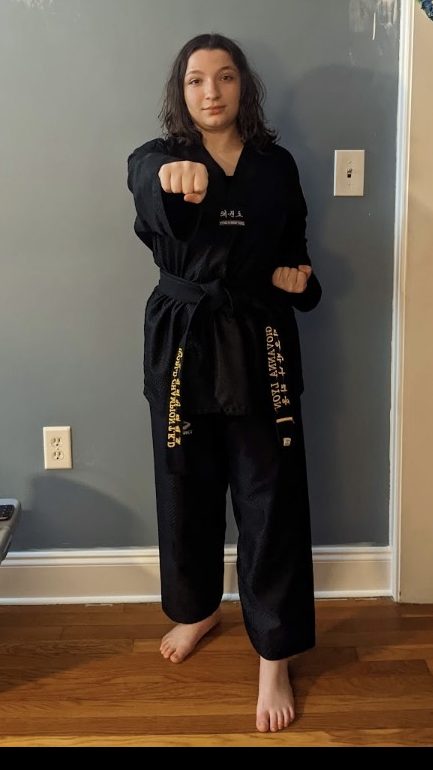
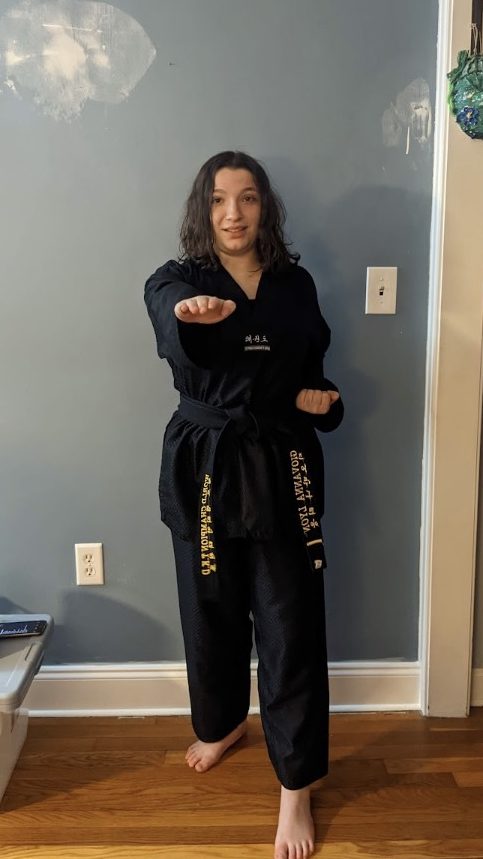
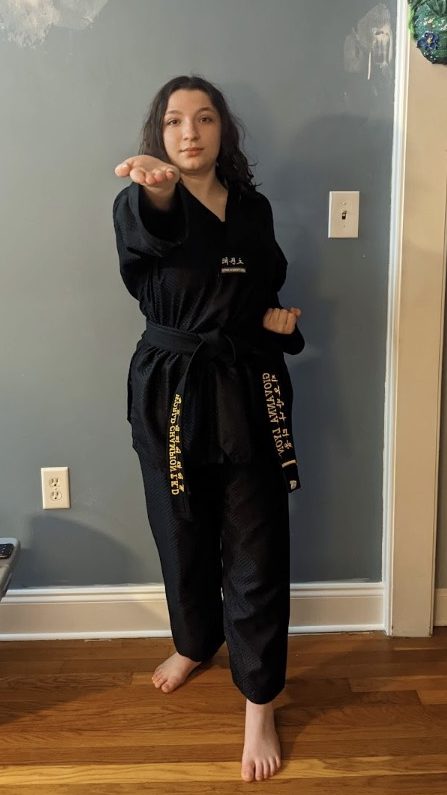

Should They Reunite:
In the end, while both federations are the same, only having considerable variations in sparring, they cannot combine into one. It doesn’t make sense because it’s been over 40 years since they split but also because their core values at this point are different. In a way, it makes sense for them to be separate because they have different aspects and techniques. Them both existing and being different allows people to choose which one fits their preferences better. They’re both unique and fun to participate in, in their own ways.
*DISCLAIMERS*
All photos used are my own.
Doboks featured are not actual ITF doboks, they’re WTF doboks. The white dobok shown is fairly similar to the ITF dobok.
This is for all audiences.
References:
Chesterman, Barnaby. “Taekwondo Training.” Taekwondo, Mason Crest Publishers, 2003, p. 76.
Chesterman, Barnaby. “The Elements of Taekwondo.” Taekwondo, Mason Crest Publishers, 2003, p. 24.
Chesterman, Barnaby. “Taekwondo Techniques.” Taekwondo, Mason Crest Publishers, 2003, p. 38.
Chesterman, Barnaby. “The Essence of Taekwondo.” Taekwondo, Mason Crest Publishers, 2003, p. 8.
International Taekwon-Do Federation. (n.d.). History of Taekwon‑Do – International Taekwon‑Do Federation. https://www.itf-tkd.org/history-of-taekwon-do/
Understanding Kukkiwon, WTF and ITF :: Taekwondo. (n.d.). https://www.taekwondo-training.com/education/brief-history-of-tae-kwon-do/understanding-kukkiwon-wtf-and-itf
